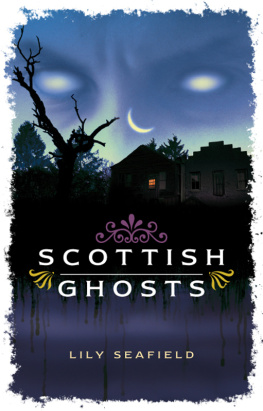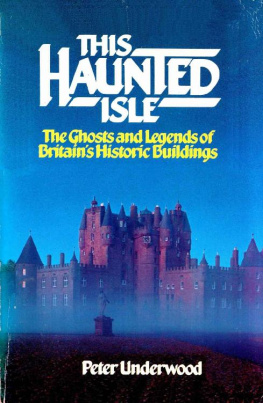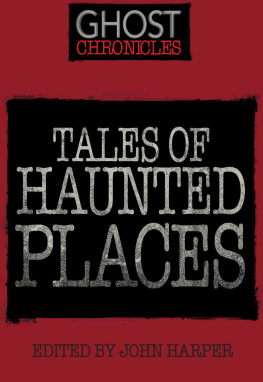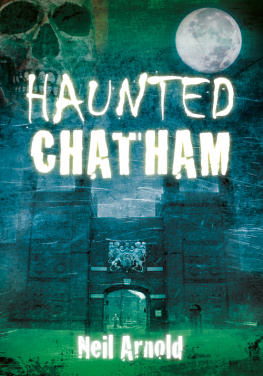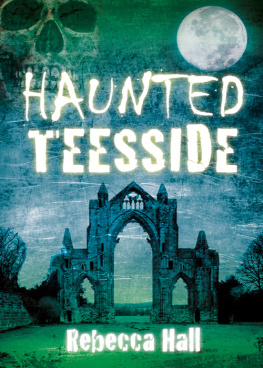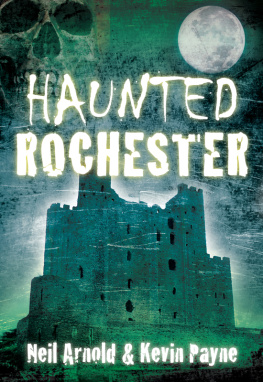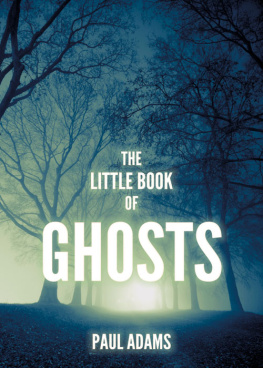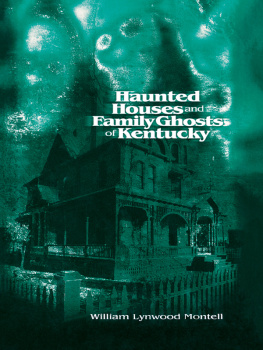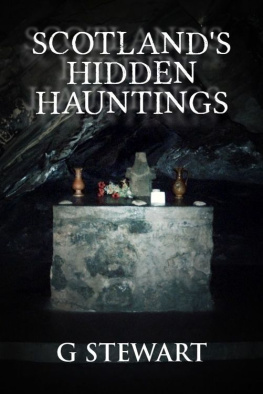Lily Seafield - Scottish Ghosts
Here you can read online Lily Seafield - Scottish Ghosts full text of the book (entire story) in english for free. Download pdf and epub, get meaning, cover and reviews about this ebook. year: 2011, publisher: Perseus Books Group;Waverley Books, genre: Detective and thriller. Description of the work, (preface) as well as reviews are available. Best literature library LitArk.com created for fans of good reading and offers a wide selection of genres:
Romance novel
Science fiction
Adventure
Detective
Science
History
Home and family
Prose
Art
Politics
Computer
Non-fiction
Religion
Business
Children
Humor
Choose a favorite category and find really read worthwhile books. Enjoy immersion in the world of imagination, feel the emotions of the characters or learn something new for yourself, make an fascinating discovery.
- Book:Scottish Ghosts
- Author:
- Publisher:Perseus Books Group;Waverley Books
- Genre:
- Year:2011
- Rating:5 / 5
- Favourites:Add to favourites
- Your mark:
- 100
- 1
- 2
- 3
- 4
- 5
Scottish Ghosts: summary, description and annotation
We offer to read an annotation, description, summary or preface (depends on what the author of the book "Scottish Ghosts" wrote himself). If you haven't found the necessary information about the book — write in the comments, we will try to find it.
Scottish Ghosts — read online for free the complete book (whole text) full work
Below is the text of the book, divided by pages. System saving the place of the last page read, allows you to conveniently read the book "Scottish Ghosts" online for free, without having to search again every time where you left off. Put a bookmark, and you can go to the page where you finished reading at any time.
Font size:
Interval:
Bookmark:
Contents

Scotland is a country with a rich and varied history, a land of strikingly beautiful scenery with a people proud of its traditions and heritage. The years that have passed since the beginnings of its history have seen much conflict and upheaval and many triumphs and tragedies that absorb historians and capture the imaginations of storytellers and their audiences. Scottish folk legends tell of fairies, giants and monsters that have lived (or still do live) cheek by jowl with the mere mortals who inhabit this small country. Where or why these stories began no one can be certain, but they have entertained audience and teller alike for many long years and continue to do so. Whether such stories have any base in fact is a matter for debate, but there will always be those who believe that they have some truth attached to them. The search for the Loch Ness Monster goes on, for example, and probably will for all time.
It is the same with the many hundreds of ghosts that are said to populate Scotland. It seems that wherever you go, whatever stories you hear about a place and its past, there is likely to be a ghost story lurking in the background, ready for anyone who will listen. The spectres of sinners condemned to a life in eternal limbo, the tortured souls of those who have been shamefully wronged, victims of cruel and terrible crimes, mysterious green ladies, white ladies and phantoms determined to leave their mark on the living, soldiers, animals and ghastly deformed creatures, all have their place in Scottish ghost stories. Old ghosts, new ghosts, Scotland has them all, ready for those who are willing to hear them, see them or sense their presence. Some ghosts have the ability, it would appear, not only to delight the committed ghost-hunter but also to convince the most sceptical of unbelievers. There are plenty of accounts of people who have been shocked into believing in the existence of ghosts by the appearance of just such a thing, making their hair stand on end and sending them screaming, white-faced, from their beds.
To those who remain dubious, it is clear why some ghost stories have been told. Perhaps a place has a great history of colourful characters who performed gory deeds. The history makes good telling, but people want to hear more. These colourful characters are dead, so what more can be said? The thing to do is to keep them going in ghostly form: a creak in the night, the howl of the wind, a falling leaf brushing past a face these things can all take on sinister form and be attributed to the mischief of those who have gone before. History comes alive again and is so much more exciting; people will flock to hear the stories and share in the experience.
Other ghost stories, the unbelievers will tell you, are merely the product of over-fertile imaginations. Someone was wakened in the night? It was no more than a bad dream. A shiver down the spine? There must be some normal physiological explanation. And so it goes on. But the tales of supernatural occurrences multiply. Sometimes a rational explanation simply cannot be found. Evidence has been collected of peoples experiences and stories have been compared. Books have been written. Television documentaries have been made. Ghosts have really made the big time and Scotland is full of them.
This book contains details of many of the most famous of Scottish ghosts, some of which are hundreds of years old. It also tells of some that are not so well known and some that are not so old.
Some ghost stories are strikingly similar older tales of ghosts and the supernatural that have become very much like the modern urban myth, perhaps because they have been passed from person to person so many times over many years. When an urban myth is told, it is almost always told as something that happened to a friend of a friend, or a relative of a friend. The events in the story are generally said to have taken place in the town or city in which the story is being told. The same story will undoubtedly have been told in several other places nationwide; each time it will be told as something that happened to somebody connected to the storyteller, in the town in which the story is being told. Thus the same story (details may vary but the content will be much the same) finds itself associated with several different locations and groups of people. Some ghost stories are like this the same basic elements are there but the places and the people involved are different. It must be the case, therefore, that some of the stories will, quite simply, be untrue.
Some of the stories in this book are myths that have their roots in the nature and activities of the personality involved. The stories that were circulated about Bonnie Dundee are a prime example of this, as are the legends that surround Michael Scott of Balwearie. Bonnie Dundee was a figure who was both feared and hated by many people so it is perhaps not surprising that rumours about his supposed devilish associations and supernatural powers were circulated by his enemies. Michael Scott was by all accounts very clever and learned, and great learning can inspire fear and suspicion.
Some ghost stories, inevitably, have their origins in long, dark nights by the fire, when a gifted storyteller with a fertile imagination could easily send a chill down the spines of a willing audience.
In a country in which beliefs in many things supernatural have been widespread for so many years, it is inevitable that there will be many more stories than real supernatural occurrences. This book makes no attempt to separate fact from fancy. Those readers who wish to pursue their interest in the ghosts and supernatural beings of Scotland can follow their own trail. This book can act as a starting point, but each ghost-hunter will find him or herself following a different path. There are so many ghosts and so many stories to chase.
In addition to the stories of particular ghosts and eerie happenings, mention is made of some of the beliefs that people in Scotland held, and sometimes still hold, about supernatural phenomena of various kinds the nameless supernatural types that were thought to visit the world of mere mortals, influencing them and sometimes playing havoc with their lives. The Devil has also earned his place in this book, for he has been associated with many of the ghostly tales of evil deeds and strange occurrences after death that were told all over Scotland over the years.
Scottish folklore is populated with a whole host of fairies, demons, ghosts, green ladies and other manifestations. It is hard, perhaps impossible, to separate these into distinct entities, for the stories and beliefs that relate to them are closely intertwined. For example, the fairy and the ghost were much the same according to certain traditions. Some fairies were not so much perceived as little people but rather as spirits of people long dead, either imprisoned on earth or left on earth after having been denied entrance to either heaven or hell. Some fairies were believed to be evildoers and mischief-makers, abducting women and children; others were less malevolent, granting wishes and effecting changes for the better in the lives of the mortals who crossed their paths.
Human interaction with the fairy world was fraught with problems. There was always the danger that if you crossed a fairy the consequences could be unpleasant in the extreme. Thus, there are stories of people who have discovered a magic salve that, if rubbed on their eyes, helps them to see fairies. When this facility is discovered by someone in the fairy kingdom, the mortal concerned at the very least has the facility taken away, but more often will have the offending eye or eyes put out.
Next pageFont size:
Interval:
Bookmark:
Similar books «Scottish Ghosts»
Look at similar books to Scottish Ghosts. We have selected literature similar in name and meaning in the hope of providing readers with more options to find new, interesting, not yet read works.
Discussion, reviews of the book Scottish Ghosts and just readers' own opinions. Leave your comments, write what you think about the work, its meaning or the main characters. Specify what exactly you liked and what you didn't like, and why you think so.

